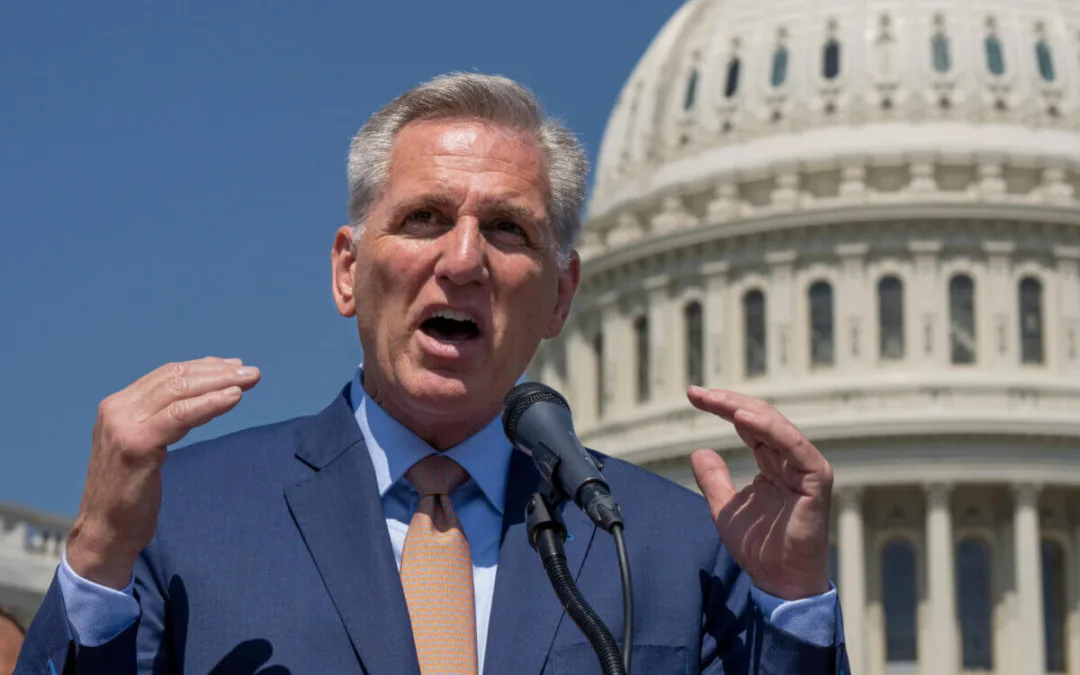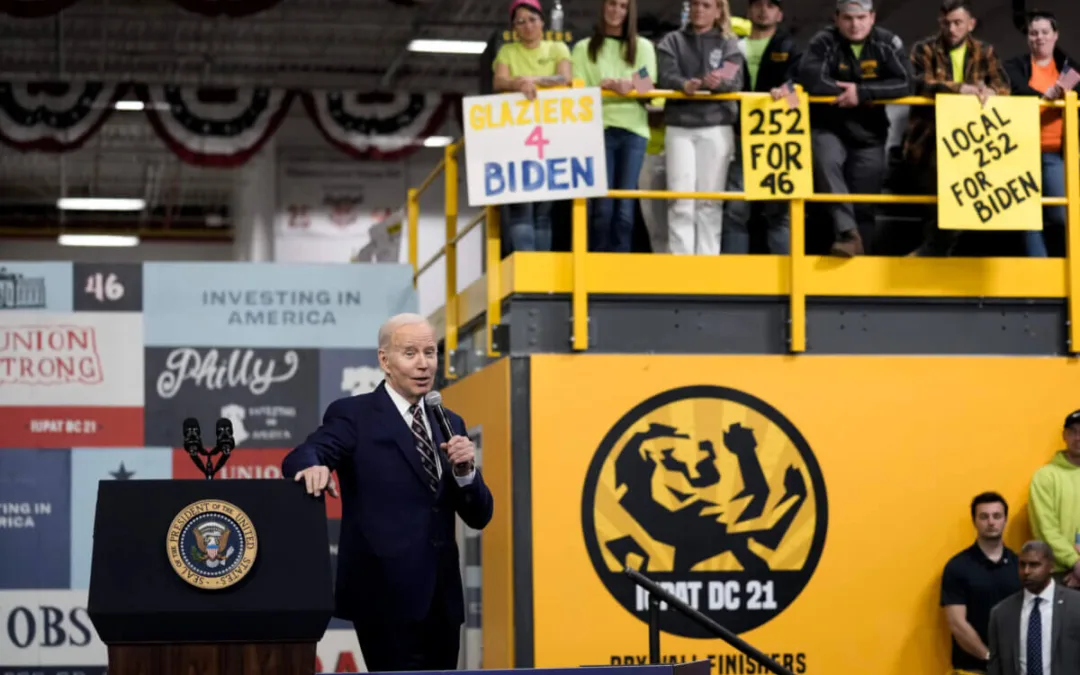
President Joe Biden delivers remarks on the economy, Wednesday, June 28, 2023, at the Old Post Office in Chicago. (AP Photo/Charles Rex Arbogast)
US Department of Labor Chief Economist Joelle Gamble explains what “Bidenomics” means and how the president’s investments are helping workers and the economy.
President Biden today released his “Bidenomics is Working” fact sheet, working to burnish his reputation as the president who steered (and continues to steer) the US out of the economically jarring COVID-19 pandemic with major investments in everything from infrastructure to rural broadband and more.
I spoke with US Department of Labor Chief Economist Joelle Gamble to find out more about Biden’s plan, including specific policies that are helping workers, and find out what’s coming next to help those still struggling with low wages, high rents and more.
I see some of your previous professional work was in organizations that looked at reimagining our economy from its 1980s-era constructs. As we start this conversation, I wanted to know if you see, broadly, in Bidenomics, a pathway toward that reimagining in this country right now?
Chief Economist Joelle Gamble: Well, Bidenomics is definitely a departure from how things have been done in the past, and I think that that’s intentional. As the President outlined in his speech today, trickle-down economics is a failed theory that failed the middle class.
Tax cuts for the rich and big corporations blew up the deficit and never trickled down. Good jobs were shipped overseas. Shrunken public investments actually undermined priorities that Americans care about, like infrastructure and education.
And so the President’s plan is in stark contrast to that, because it’s focused on making smart investments in America, educating and empowering workers, and promoting competition. And those are all things I think will make the economy much stronger.
Tell me about what you see are the biggest accomplishments in this agenda, and particularly ones that have the biggest impact on workers and their families.
I think the labor market recovery is, in many ways, remarkable.
Over 13 million jobs have been added since the President took office, and nearly 800,000 of them were in the manufacturing sector.
Unemployment fell below 4% at the end of the President’s first year in office—which beat expectations, I should say—and it stayed there ever since. We’ve seen record-low unemployment rates for African Americans, Hispanic Americans, people with disabilities, etc. So there’s been a lot of progress made in the labor market.
I should also add that the prime age labor force participation rate is the highest it’s been in 15 years as well, and so there’s a really strong labor market story here.
On top of that, there’s other progress made in other regards. For instance, there’s been a boom in small business applications over the last two years. And we are finally starting to see some progress on inflation.
The fact sheet mentions making it easier to join a union. One big piece of legislation in Congress is the PRO Act, though it faces an uphill battle. How is the administration prioritizing this in terms of empowering workers? Is it possible to get it done despite the Senate filibuster?
The President definitely supports the PRO Act, and—as he says many times—is determined to be the most pro-union president that this country has had.
And even though the progress that he would like to see on the PRO Act in Congress hasn’t happened, that has not meant that he has stopped fighting for workers through administrative action, and in other ways that we can promote a worker’s right to organize.
On enforcement of antitrust laws, there have been a lot of wins on that front, from stopping ridiculous mergers to possibly preventing some. But monopoly power continues, and it’s felt most keenly perhaps in the rising cost of goods and services over the past few years. Does the plan end with better antitrust enforcement, or are there more options here on the table?
Well, I think the President’s plan to promote competition comes through a lot of different policy levers. There is, of course, the work that some of the regulatory agencies are doing to try to increase competition in the marketplace.
But another way to do that is actually to make it easier to start and grow a business. And so the President’s agenda to increase access to capital for small businesses is actually very important, especially as we invest in a lot of different important manufacturing sectors, like clean energy.
What about the minimum wage? Is that a conversation that’s happening right now?
The President still continues to support a $15 minimum wage.
The lack of affordable and quality housing is becoming a big problem across the country—which then becomes, as you know, a worker issue too. In what ways do you think that this plan can help with that?
I think this plan is very important for helping with that, in part because the President’s plan is good for workers—meaning getting people good-paying jobs they can raise a family on is always an important part of any equation to making people’s lives better.
And then I will say that the investments we’re making are important to growing communities and attracting investment that could flow into other sectors. We’re talking about construction in the non-residential space, but that’s also important to increase housing supply as well.
Given what you know about the labor pool and the economy, are Americans better off than they were five years ago? Will things be better in another five years?
I’m not in the prediction business, but looking objectively at the data—13 million jobs added, wages growing fastest for the lowest wage workers, record low unemployment rate—this is progress.
Politics

Teamsters and UPS Reach Tentative Deal to Avoid Strike, 340,000 Workers to Get Raises
The tentative deal represents a huge win for full- and part-time UPS Teamster workers, who would get significant pay raises and better working...



One Republican Senator Is Blocking 265 Military Promotions, Leaving the Marines Without a Confirmed Leader
Sen. Tommy Tuberville's decision means these military officers are not getting the pay raises they’re owed, cannot move their families to wherever...
Local News



Teamsters and UPS Reach Tentative Deal to Avoid Strike, 340,000 Workers to Get Raises
The tentative deal represents a huge win for full- and part-time UPS Teamster workers, who would get significant pay raises and better working...



One Republican Senator Is Blocking 265 Military Promotions, Leaving the Marines Without a Confirmed Leader
Sen. Tommy Tuberville's decision means these military officers are not getting the pay raises they’re owed, cannot move their families to wherever...




